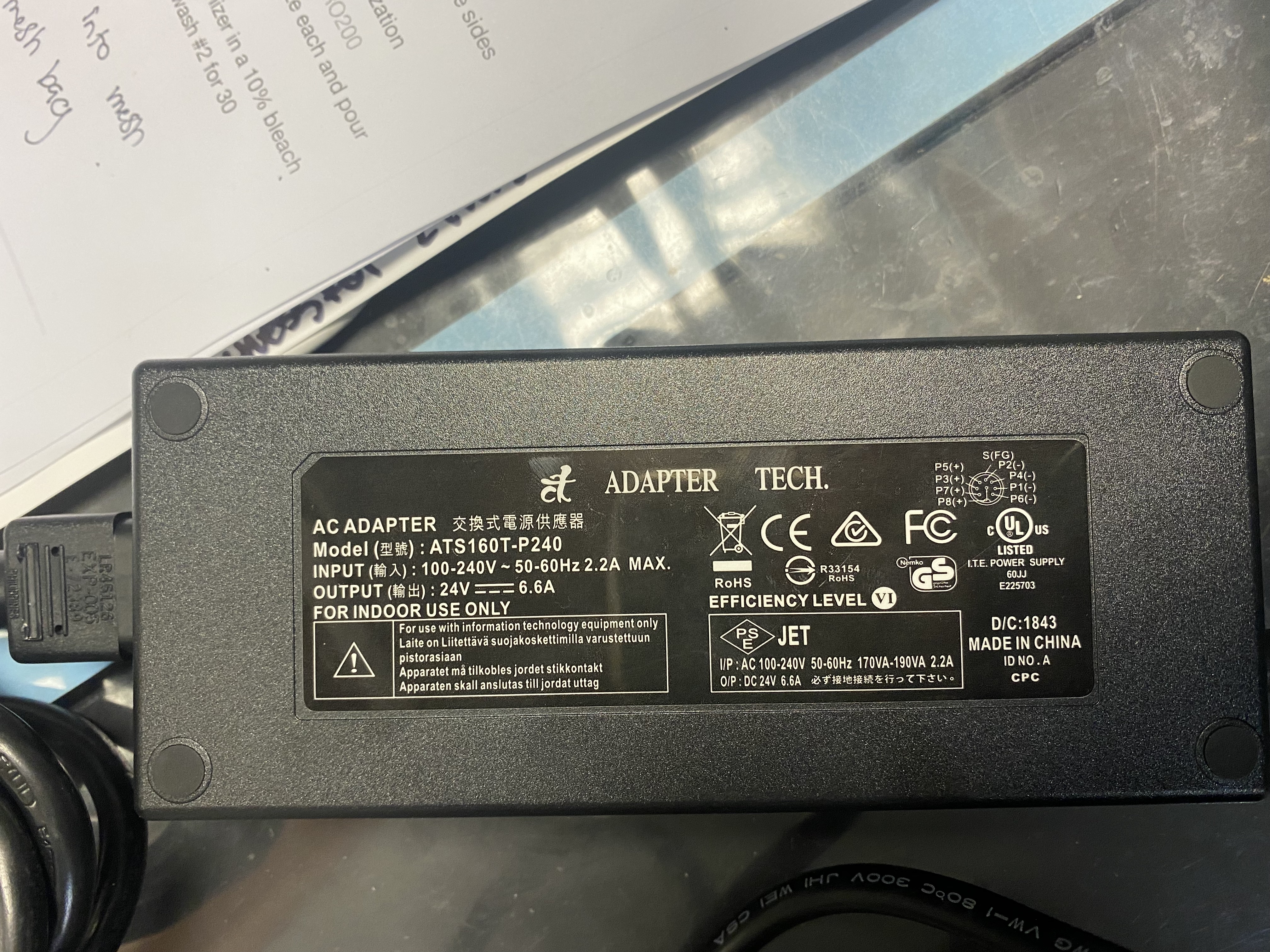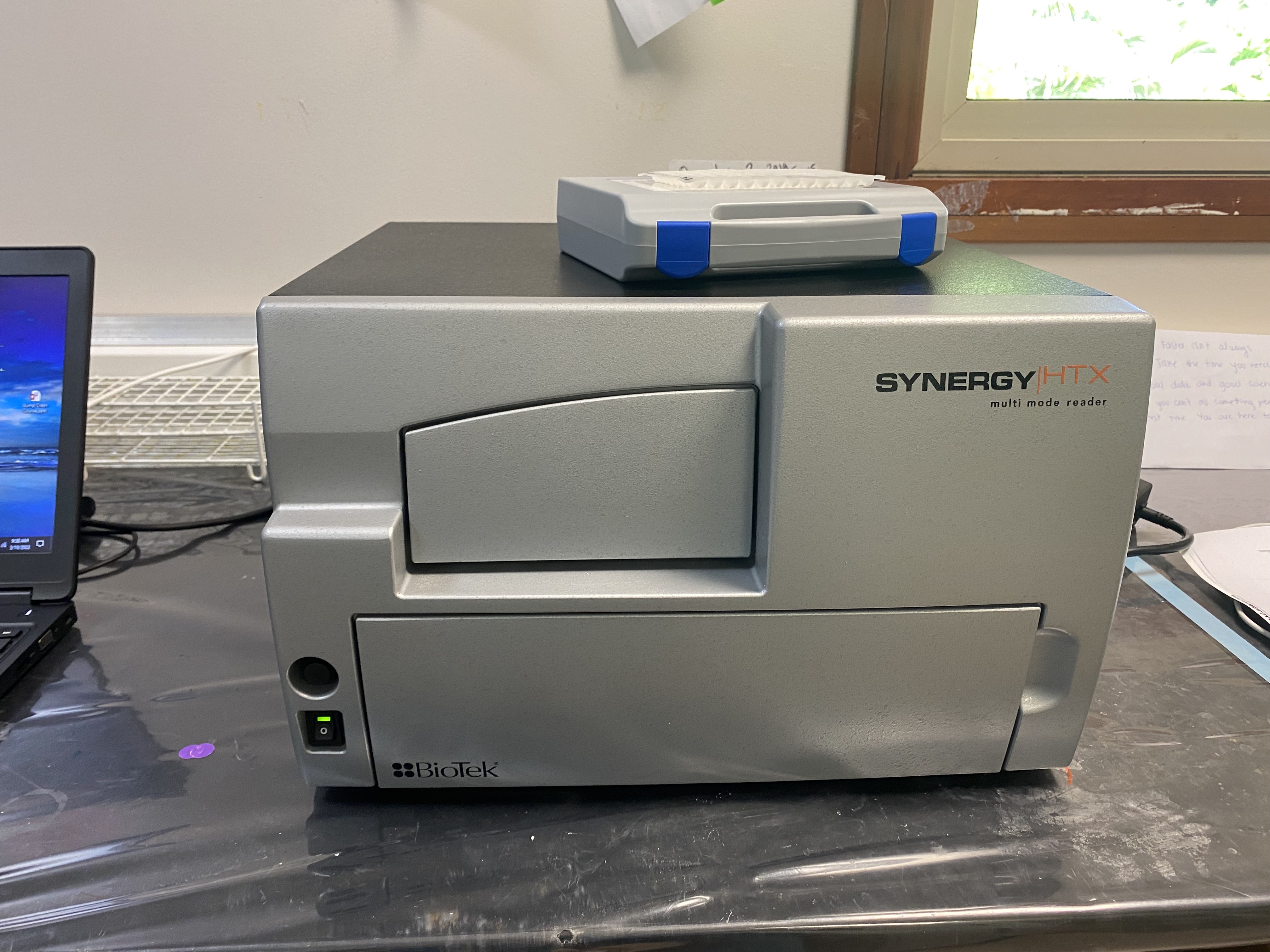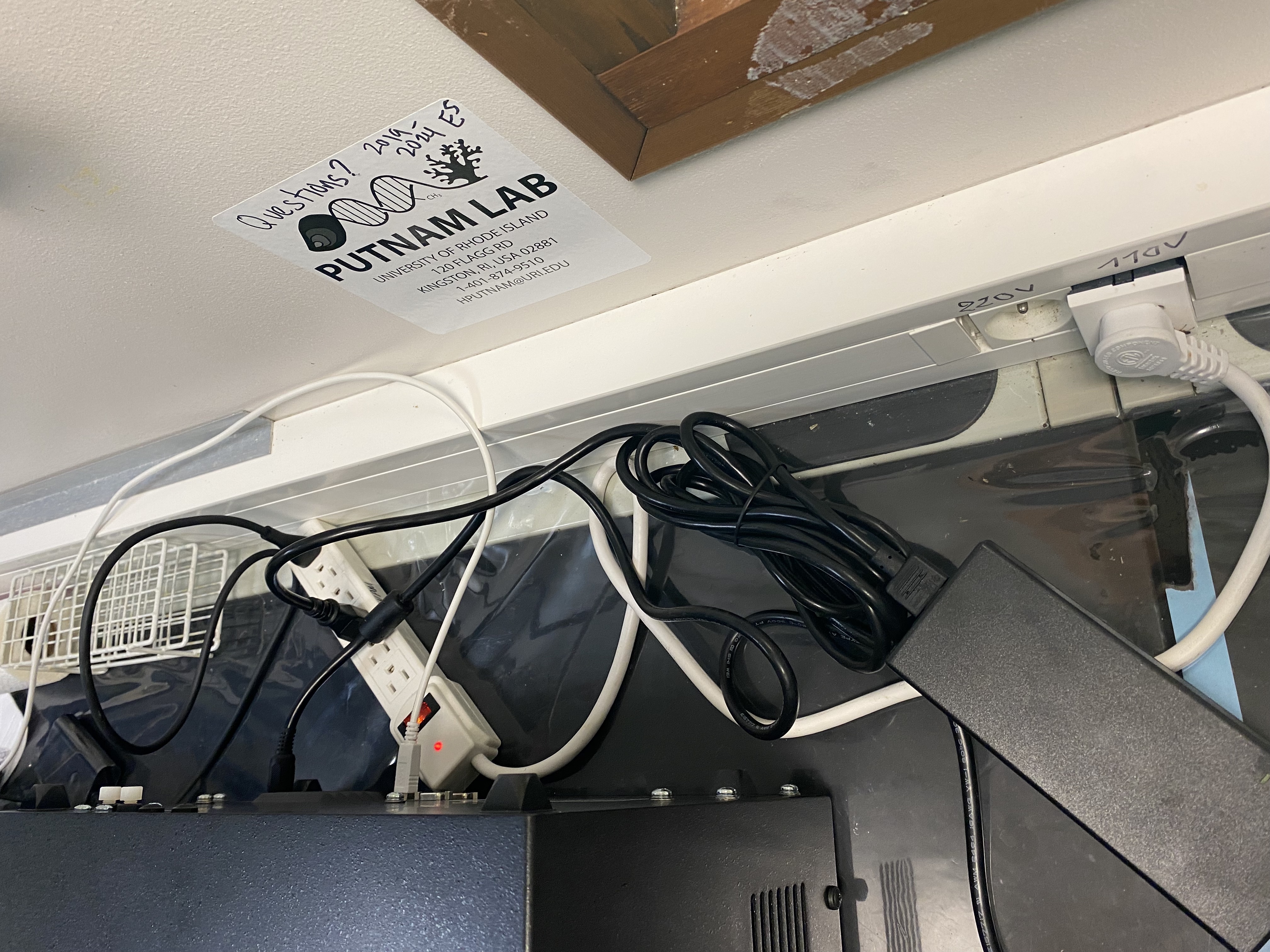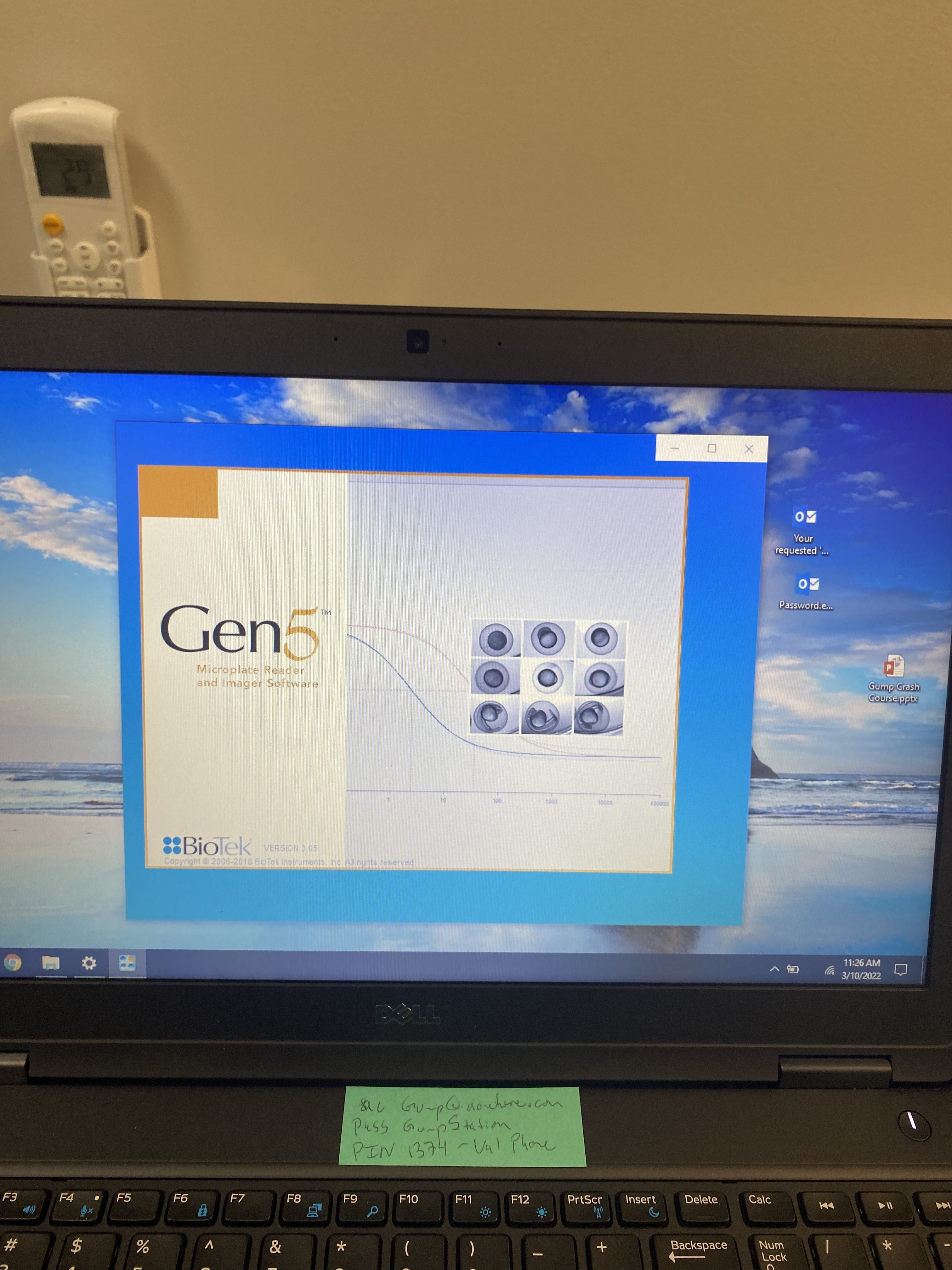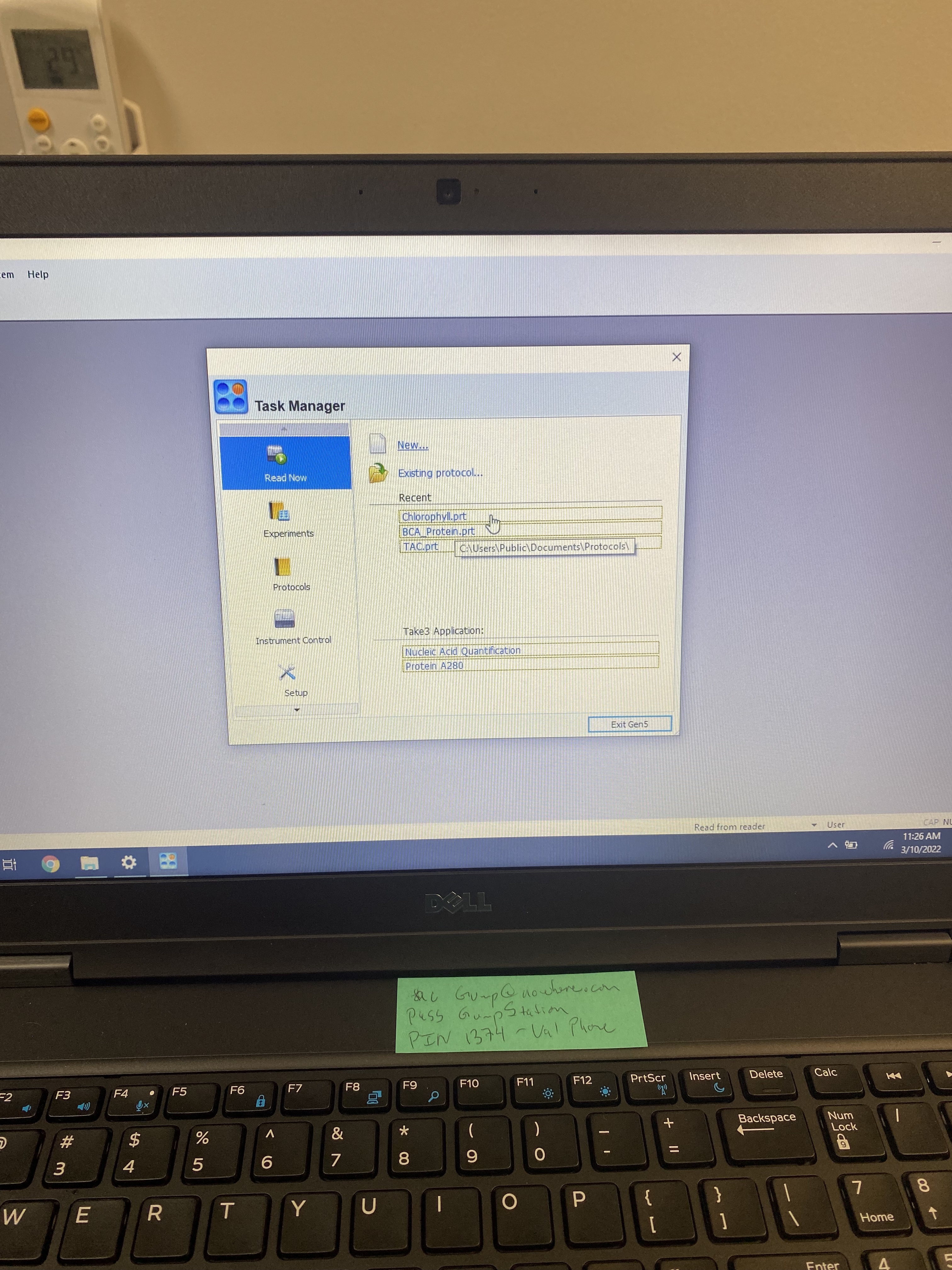| layout | title | date | categories | tags | projects |
|---|---|---|---|---|---|
post |
Chlorophyll Protocol |
2020-01-01 |
Protocols |
chlorophyll, physiology |
E5, Putnam Lab |
Original: 20200101
Last Revised: 20220115 DMBP
Contents
- Materials
- 100% acetone
- flammable safe fridge 4°
- quartz 96 well plate
- Microcentrifuge (Mo'orea Gump Molecular Lab)
- 1ml pipette and tips
- 1.5 ml microfuge tubes
- Synergy HTX Multi-Mode Microplate Reader (Mo'orea Gump Molecular Lab)
- Gen5 Software (Mo'orea Gump Molecular Lab Putnam Computer)
Set up
- Plug in the Synergy HTX Multi-Mode Microplate Reader to a 110V outlet. The input for this equipment is from 100-240V but to be safe use a surge protected extension cord found in the second Putnam Lab Drawer on the molecular bench.
- Plug in the Synergy HTX Multi-Mode Microplate Reader USB cord to the Putnam Lab dell laptop also in the second Putnam Lab Drawer on the molecular bench.
- Plug the DELL laptop charging cord into the surge protected 110V extension cord as well.
Sample Preparation
- Thaw homogenate aliquot.
- If not done already, centrifuge the 500 μL aliquot of adult airbrush homogenate at 13,000 rpm for 3 minutes to separate the host and Symbiodiniaceae cells.
- Remove and discard the supernatant.
- Add 1 mL of 100% acetone to the pellet in the 1.5 mL microcentrifuge tube and vortex the tubes for 15 sec.
- Place the tubes in a fridge in the dark at 4°C for 24 hours.
- Vortex the tubes for 15 sec.
- Spin the tubes down at 13,000 rpm for 3 minutes in the microcentrifuge to pellet any debris.
- Pipette 200µl of sample to duplicate wells of 96-well quartz plate.
- Pipette 200µl of acetone blank to duplicate wells.
- Cover the plate with silicone pad every 5th sample or so to reduce evaporate as samples are added.
- Remove silicon pad.
- Follow steps below to measure the extract Absorbance on the Synergy HTX Multi-Mode Microplate Reader at 630, 663, and 750 nm in a 96-well quartz plate.
- Standardize for path length in 200µl of sample in 96-well quartz plate.
Measure the Absorbance
Follow the Synergy HTX Operating Manual and Gen5 Software Manual to install the software on your host computer and general operating instructions.
- Open the Gen5 software on your computer.
- Whenever you start Gen5, the Task Manager opens. In Mo'orea, protocols (including chlorophyll) have been created on the Gen5 software on the HP Putnam Lab computer, so you can select the pre-made protocols from the dropdown menu.
- To create a new protocol, follow the 'Getting Started' section in the Gen5 Software Manual.
- The plate loader should automatically open. Load your plate following the distinctions in the plate loader and you will be all set.
- To measure Absorbance, select the 'Chlorophyll Protocol' option.
- Press the green start protocol button in the GEN5 software and allow the protocol to run through the 630, 663, and 750 nm.
- Export the raw GEN5 software data file and a CSV to the Desktop in a designated folder. Also, immediately upload to a google drive folder to have for future use.
- Standardize for path length in 200µl of sample in 96-well quartz plate.
Calculating Chlorophyll Concentration
Chlorophyll a and c2 concentrations are calculated from the equations in Jeffrey and Humphrey 1975 after substracting A750nm from all measurements.
Need to correct for differences in path length of the volume in the 96 well plate compared to the 1cm path length of a cuvette. Warren 2007
